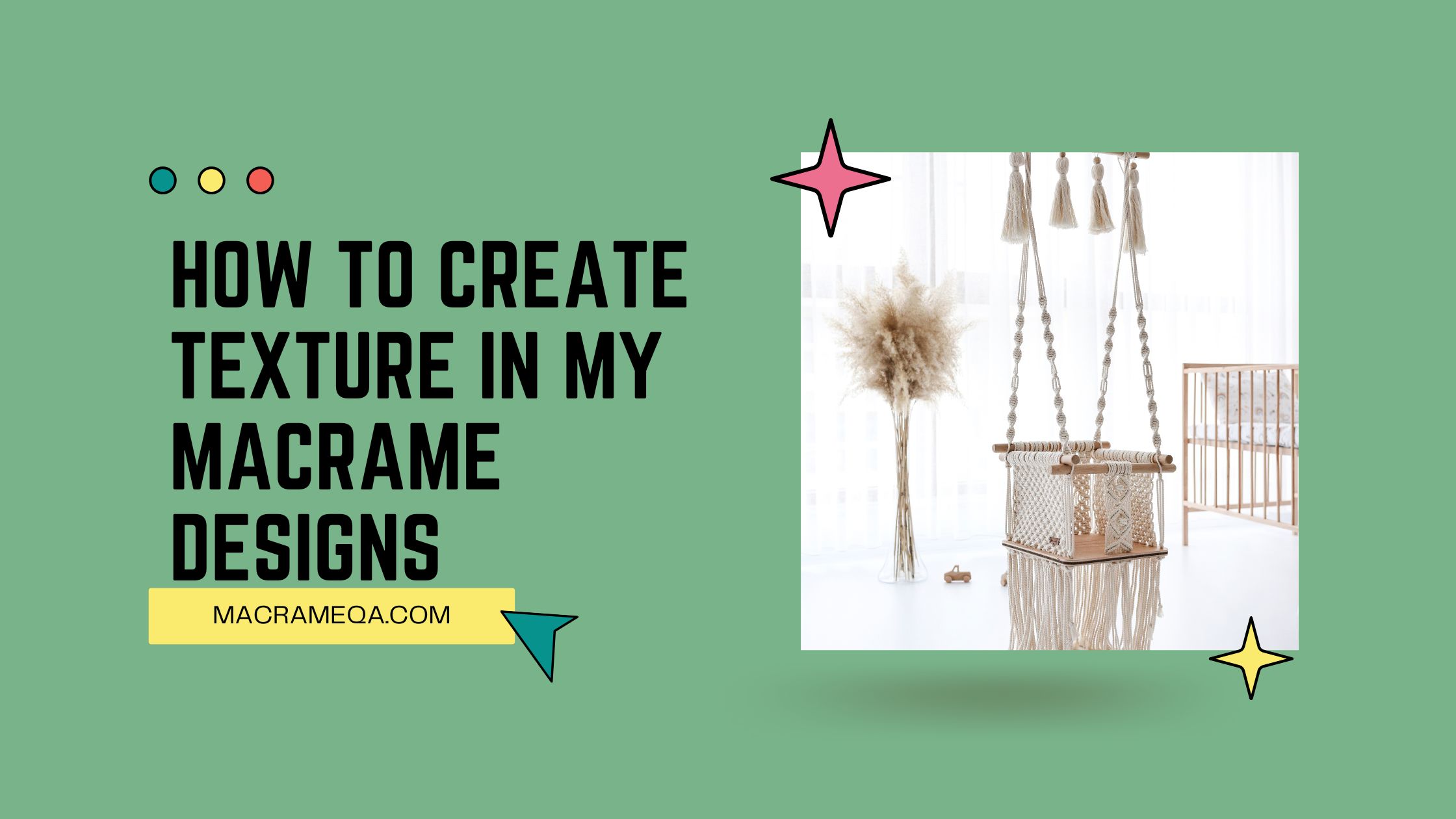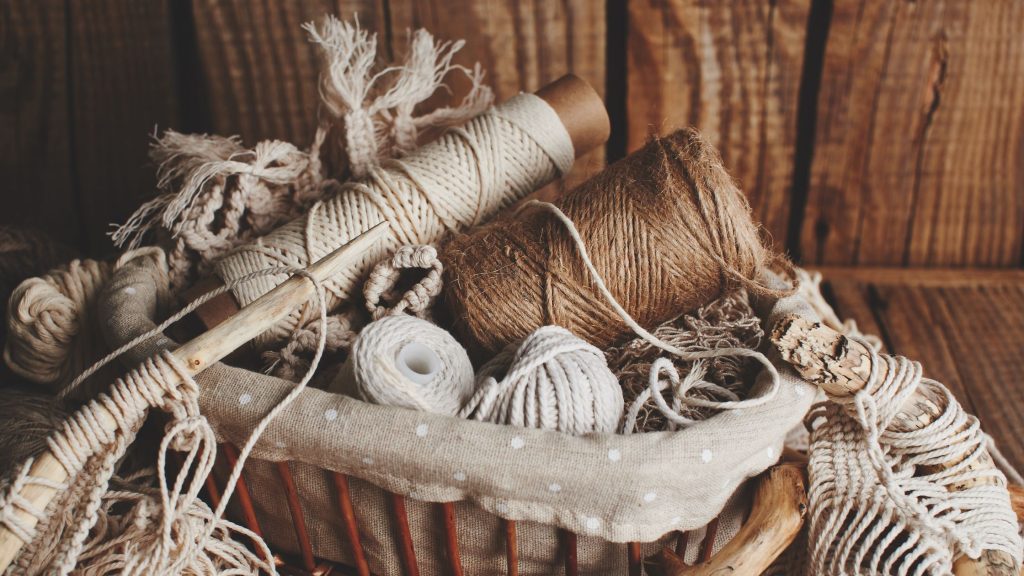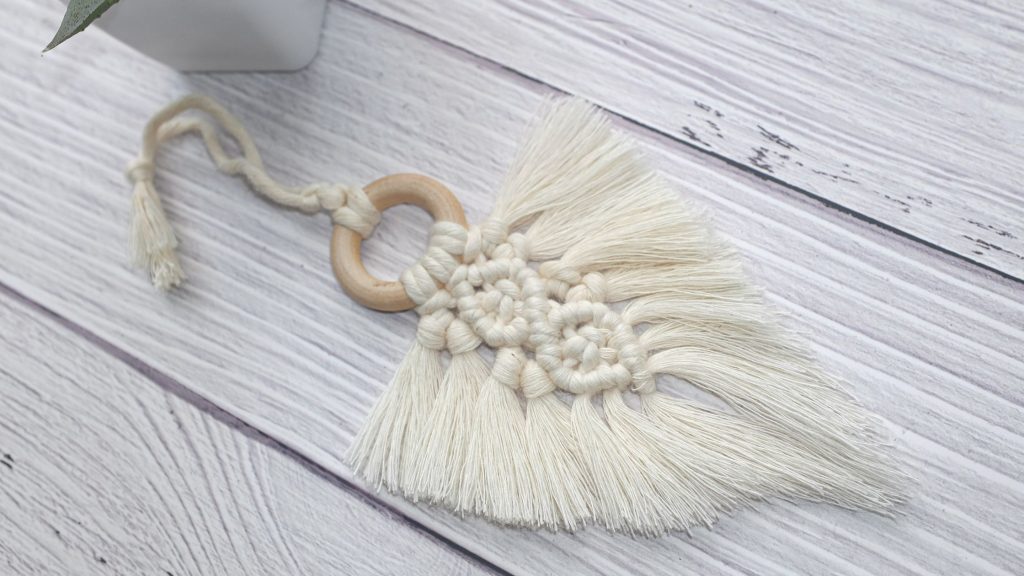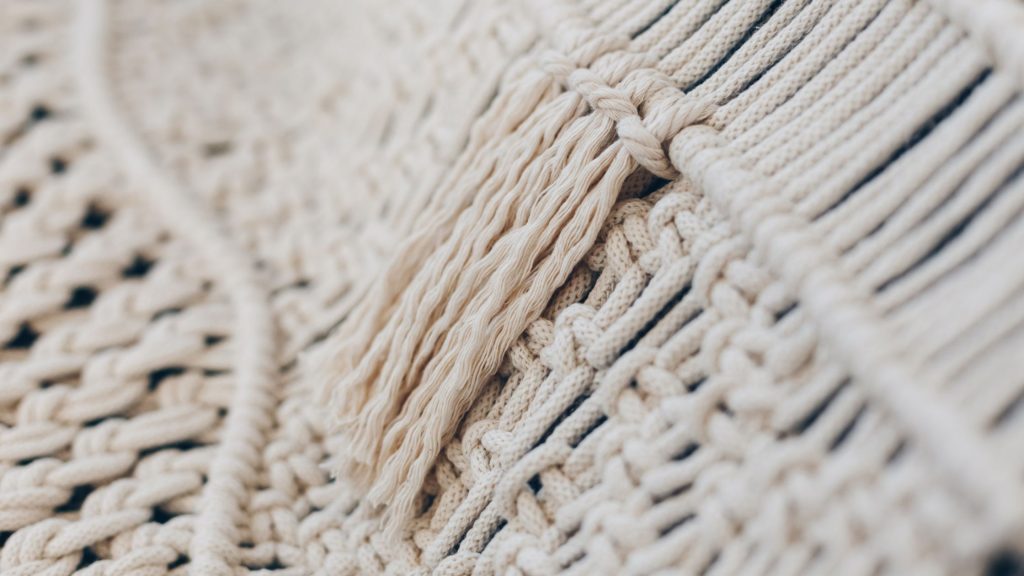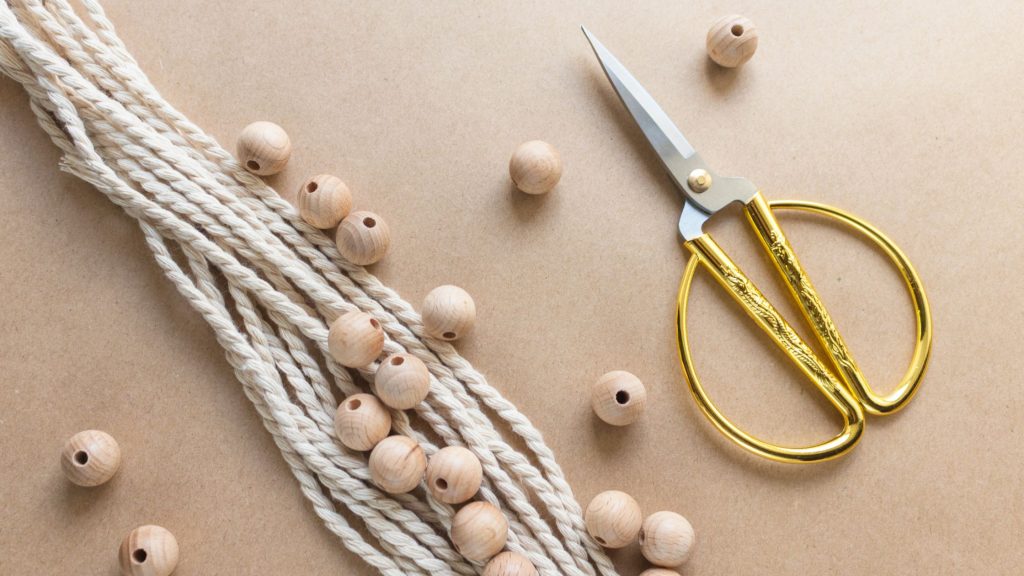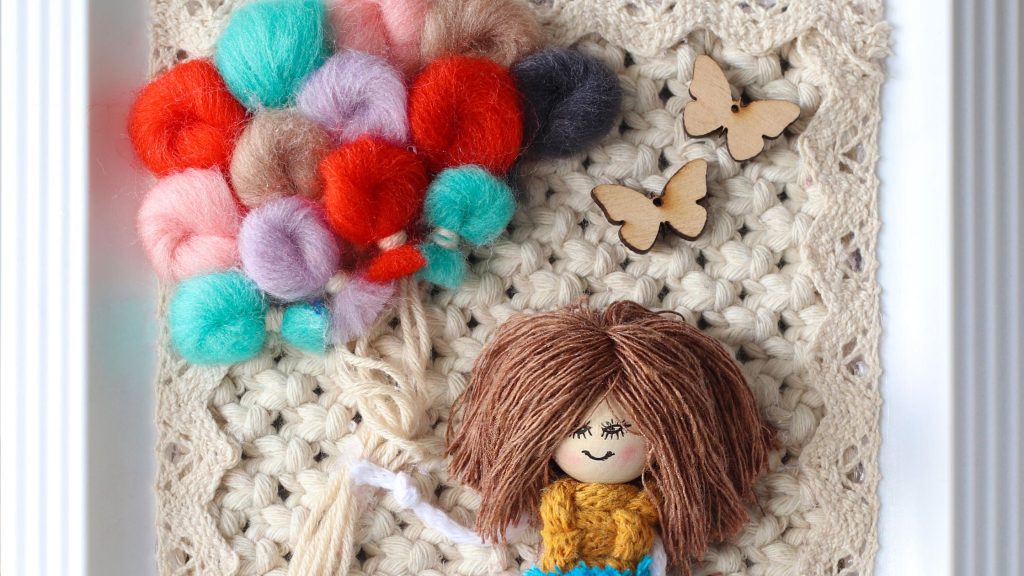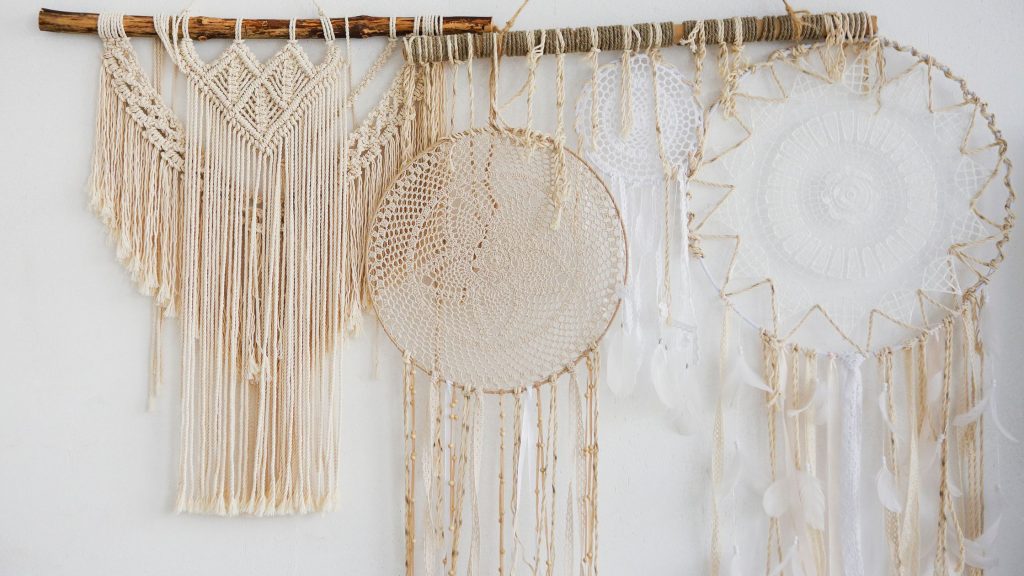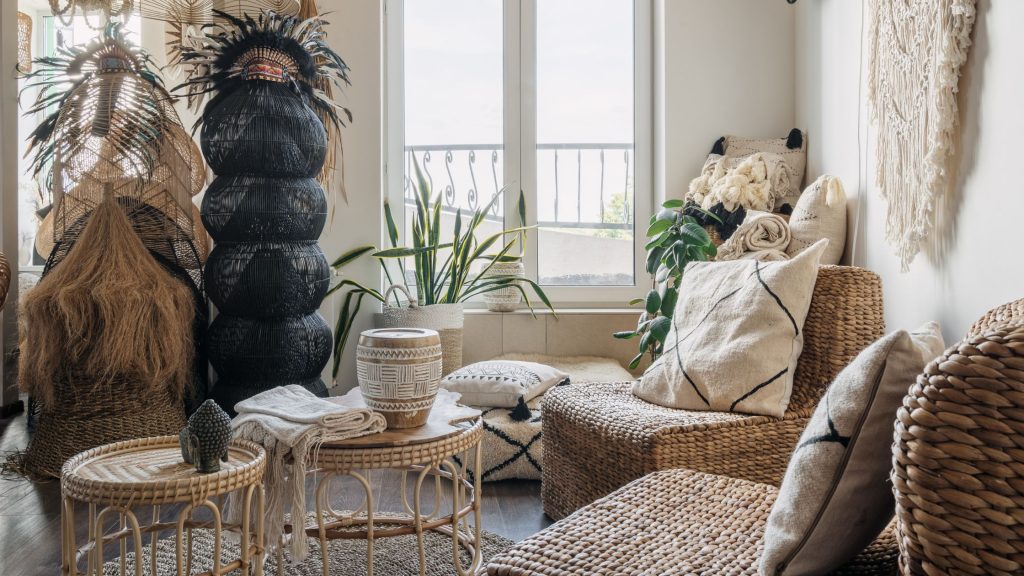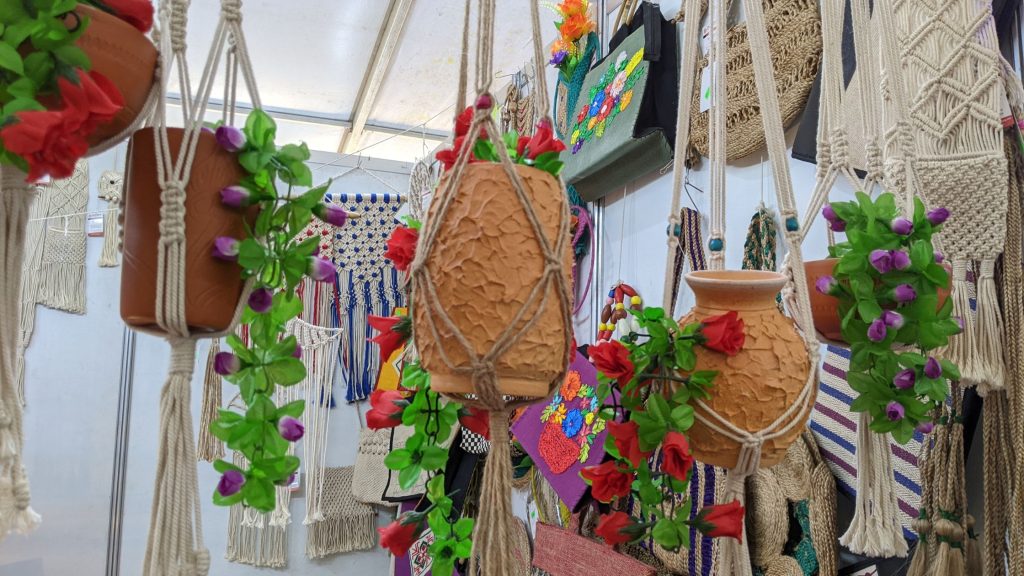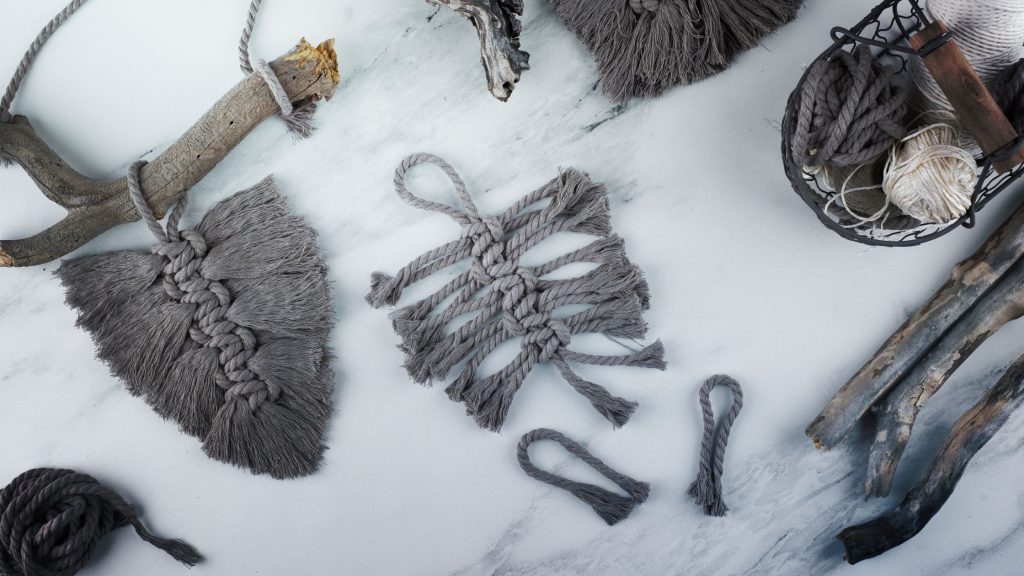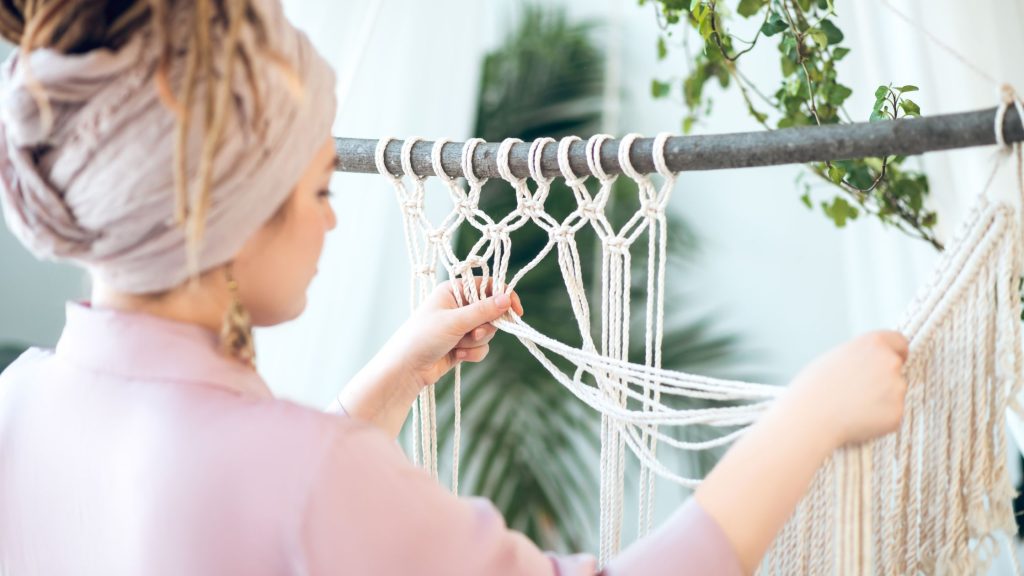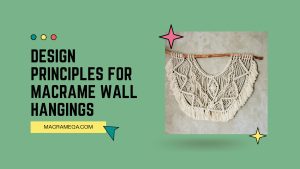If you’ve ever wondered how to add that extra touch of texture to your macrame designs, you’ve come to the right place. In this article, we’ll explore some simple yet effective techniques to help you create stunning textures in your macrame pieces. Whether you’re a beginner or an experienced macrame enthusiast, these tips and tricks will surely inspire you to elevate your designs to the next level.
Create Texture In My Macrame Designs
So grab your macrame cord, set aside some time, and let’s get started on your journey to creating beautiful textures in your macrame creations.
Choosing the Right Materials
The Importance of Material Selection
When it comes to creating texture in your macrame designs, the choice of materials is crucial. Different fibers and cords can greatly impact the overall texture and appearance of your macrame piece. By carefully selecting the right materials, you can enhance the visual and tactile aspects of your design.
Considerations for Material Choice
There are a few key factors to consider when choosing materials for your macrame project. Firstly, the fiber or cord should have the right thickness and weight to achieve the desired texture. Thicker cords can create more pronounced texture, while lighter ones might result in a more delicate and subtle effect.
Additionally, the durability and strength of the material should be taken into account. Macrame pieces often require knotting and tension, so opting for a sturdy fiber or cord will ensure that your design will withstand the test of time.
Lastly, consider the color and finish of the material. The hue and sheen of the fiber can impact how the texture is perceived and can interact with other design elements such as beads or accents.
Exploring Different Types of Cords and Fibers
There is a wide variety of cords and fibers available for macrame designs, each offering its own unique texture. Natural fibers like cotton or hemp can provide a soft and organic texture, while synthetic materials like nylon or polyester can create a smoother and sleeker look.
Jute is another popular choice for macrame, known for its rougher texture and visual appeal. Silk cords, on the other hand, can add a touch of elegance and delicacy to your designs.
Experimenting with different materials will allow you to discover the textures that resonate with your personal style and the aesthetic you wish to achieve.
Exploring Various Knots and Techniques
Introduction to Basic Macrame Knots
To create texture in your macrame designs, it’s essential to master a range of fundamental knots. These knots form the foundation of macrame and can be combined and manipulated to produce various textures and patterns.
Some common basic knots include the square knot, the half hitch knot, and the lark’s head knot. The square knot is a versatile knot that can be used to create a variety of textured effects, while the half hitch knot adds depth and dimension to your design. The lark’s head knot is often used to attach cords to a base or to create loops.
By practicing and experimenting with these basic knots, you can gain a solid understanding of their various applications and how they contribute to texture.
Using Different Knots to Create Texture
Once you have mastered the basic knots, you can start exploring advanced knotting techniques to enhance the texture in your macrame designs. Knots like the spiral stitch, the double half hitch, or the berry knot can add intricate details and unique textures to your piece.
Additionally, varying the tension and spacing between knots can further contribute to the overall texture of your design. Tighter knots will create a denser texture, while looser knots can result in a more open and airy feel.
Don’t be afraid to experiment with different combinations of knots and techniques to achieve the desired texture and visual interest in your macrame pieces.
Combining Knots and Techniques
One of the beauties of macrame is its versatility and the ability to combine different knots and techniques to achieve desired effects. By using a combination of knot types and varying their placement, you can create captivating textures and patterns in your macrame designs.
For example, combining square knots with half hitch knots can result in a braided texture, while alternating knots of different lengths can create a ribbed effect. Mixing knots of different sizes or experimenting with asymmetrical patterns can add further depth and dimension to your design.
The possibilities are endless when it comes to combining knots and techniques, allowing you to create truly unique and textured macrame pieces.
Playing with Patterns and Designs
Understanding the Impact of Pattern Selection
When it comes to texture in macrame, pattern selection plays a vital role. Different patterns can create varying degrees of texture and visual interest in your designs. Understanding how patterns work and their impact on the overall texture can help you achieve the desired effect.
Patterns such as chevron, diamond, or herringbone can provide a structured and defined texture to your macrame piece. These patterns often involve repetitive knotting or twisting, resulting in a visually striking texture.
On the other hand, organic or freeform patterns can create a more natural and organic texture. These patterns allow for more irregular and flowing knots, resulting in a softer and more relaxed texture.
Creating Texture through Pattern Variation
To add depth and dimension to your macrame designs, consider experimenting with pattern variations. By combining different patterns within a single piece, you can create a dynamic texture that captures attention and engages the senses.
Mixing smaller and larger patterns, or introducing unexpected elements like knots of different sizes, can create an eye-catching texture. Playing with the spacing or density of knots within a pattern can also contribute to the overall texture of your design.
Pattern variation allows you to create unique textures that reflect your personal style and vision while adding visual interest to your macrame creations.
Experimenting with Different Design Elements
Texture in macrame is not solely determined by the knots and patterns used; other design elements can also contribute to the overall texture and visual impact.
Consider incorporating elements such as braids, twists, or loops into your design to create additional layers of texture. Adding different thicknesses or combinations of cords can also add depth and dimension to your macrame piece.
Incorporating beads or accents can further enhance the texture of your macrame design. Beads can provide an additional tactile element and create interesting variations in texture when combined with knots and patterns.
Incorporating Beads and Accents
The Role of Beads in Adding Texture
Beads can play a significant role in adding texture to your macrame designs. Incorporating beads into your knots can create interesting variations in texture and enhance the overall visual appeal of your piece.
Depending on the type of beads you choose, you can achieve different textural effects. For example, wooden beads can add a natural and earthy texture, while glass or metal beads can create a more polished and refined texture.
By selecting beads that complement your chosen materials and design elements, you can elevate the texture of your macrame piece to new heights.
Choosing the Right Beads and Accents
When selecting beads and accents for your macrame designs, it’s important to consider their size, shape, and material. Beads can not only add texture but also contribute to the overall aesthetic and style of your piece.
For larger macrame designs, you may want to opt for larger beads that will make a bold statement and create a strong textural impact. Smaller beads can be used in delicate or intricate designs to add subtle texture and detail.
The shape of the beads is also crucial. Experiment with different shapes, such as round, cylindrical, or geometric beads, to achieve the desired texture and visual effect.
Lastly, consider the material of the beads and accents. Different materials, such as wood, ceramic, or gemstones, can offer varying textures that complement the overall look and feel of your macrame design.
Incorporating Beads into Macrame Designs
Once you have chosen the right beads and accents, you can begin incorporating them into your macrame designs to enhance the overall texture.
There are several ways to incorporate beads into your macrame pieces. You can incorporate them directly into the knots by threading them onto individual cords or by stringing them onto a separate thread that is then incorporated into the knots.
Experiment with different placements and spacings to achieve the desired texture and visual appeal. Beads can be used as accents within a pattern or as borders to define and accentuate the texture of your macrame design.
By skillfully integrating beads and accents, you can elevate the texture of your macrame piece and create a truly unique and visually captivating design.
Utilizing Color and Contrast
The Influence of Color on Texture Perception
Color has a significant impact on how texture is perceived in macrame designs. By carefully considering and utilizing color, you can enhance the visual and tactile texture of your piece.
Dark colors, such as black or deep blues, can create a sense of depth and density in your design, accentuating the texture of the knots and patterns. Lighter colors, on the other hand, can make the texture appear more subtle and delicate.
Additionally, contrasting colors can create a dynamic and visually striking texture. By using complementary colors, such as blue and orange or purple and yellow, you can create a sense of vibrancy and dimension in your macrame design.
Exploring Contrasting Color Combinations
When it comes to texture in macrame, exploring contrasting color combinations can have a significant impact on the overall visual effect.
Contrasting colors, such as black and white or blue and orange, can create a bold and striking texture in your macrame design. The juxtaposition of these colors can highlight the texture of the knots and patterns, making them visually stand out.
Analogous colors, those that are adjacent on the color wheel, can also create an interesting texture. By using different shades and tones of the same color, you can achieve a subtle and harmonious variation in texture that adds depth and dimension to your macrame piece.
Using Color to Enhance Texture in Macrame
In addition to contrasting color combinations, you can also use color strategically to enhance the texture of your macrame designs.
By using lighter or darker shades of the same color in different areas of your design, you can create an illusion of depth and dimension, accentuating the texture. For example, using a lighter shade at the center of a pattern and gradually transitioning to a darker shade towards the edges can create a three-dimensional texture.
Alternatively, incorporating ombre or gradient effects can add an interesting texture to your macrame piece. Mixing various shades of a color or transitioning between different colors can create a visually captivating texture that catches the eye.
By harnessing the power of color, you can take your macrame designs to a whole new level of texture and visual appeal.
Adding Dimension with Fringes and Tassels
Integrating Fringes and Tassels into Macrame
Fringes and tassels are excellent additions to macrame designs when seeking to add both visual and tactile texture. These dimensional elements can provide a sense of movement and create a striking texture that enhances the overall design.
Fringes can be incorporated by leaving longer strands of cords at the bottom of your macrame piece, which can then be unravelled or knotted to create a textured fringe. Tassels, on the other hand, can be created by gathering multiple cords together and tying them off with a separate piece of cord.
By integrating fringes and tassels into your macrame designs, you can add depth and visual interest, making your piece more dynamic and textured.
Creating Various Fringe and Tassel Styles
When it comes to fringe and tassel styles, the options are endless. Different lengths, thicknesses, and textures of fringes and tassels can create various effects in your macrame designs.
For a bohemian or rustic texture, consider using longer and looser fringes that provide movement and a sense of freedom. By mixing various types of knotting and twisting within the fringes and tassels, you can achieve a more intricate and detailed texture.
Alternatively, for a more structured texture, opt for shorter and tighter fringes or tassels. Mixing different colors or materials within the fringe or tassel can also create additional layers of texture and visual interest.
Experiment with different fringe and tassel styles to find the ones that best suit your macrame design and add the desired texture to your piece.
Enhancing Texture with Dimensional Elements
When adding fringes and tassels to your macrame designs, you can enhance the overall texture by incorporating different materials and textures.
Consider combining cords of different thicknesses or materials within the fringes and tassels to create contrast and dimension. Mixing smooth cords with textured or fluffy ones can add an extra tactile element to your macrame piece.
Additionally, adding beads or accents to the fringes or tassels can create an interesting variation in texture. Beads can be threaded onto the cords or attached at the end of the fringe or tassel to provide visual interest and an additional layer of texture.
The dimensional elements of fringes and tassels offer endless possibilities for enhancing the texture of your macrame designs, allowing you to create truly unique and captivating pieces.
Experimenting with Hanging Techniques
Different Methods for Hanging Macrame Pieces
The way you hang your macrame pieces can impact the texture and overall appearance of your design. There are various methods you can use to hang your macrame, each offering different textures and visual effects.
One common method is using a wooden dowel or branch as a hanger. This method provides a clean and structured look, allowing the macrame to hang straight. Alternatively, using a metal ring or hoop can create a more modern and minimalistic texture.
You can also experiment with hanging your macrame design from multiple points or attaching it to a wall using hooks or nails. These methods can create a more dynamic texture as the macrame drapes or twists.
Creating Texture through Hanging Methods
The hanging method you choose for your macrame piece can significantly impact the texture and overall visual effect. By considering the placement and tension of the cords, you can create interesting texture variations.
For example, hanging your macrame design taut against a wall will result in a sleek and uniform texture. On the other hand, allowing the cords to drape or twist can create a more relaxed and organic texture.
Using different hanging methods in combination with the texture of your macrame design can create a visually captivating and dimensional piece of art.
Exploring Alternative Display Options
Don’t limit yourself to traditional hanging methods when displaying your macrame designs. There are various alternative display options that can add an extra layer of texture and visual interest.
Consider placing your macrame piece on a floating shelf or tabletop display stand. This method allows the cords to drape and interact with the surface, creating a unique texture. Alternatively, incorporating your macrame into a hanging plant display can add a natural and organic texture to your space.
Experiment with different display options and arrangements to find the one that enhances the texture and overall visual impact of your macrame design.
Considering the Environment and Space
Adapting Macrame Designs to Different Settings
When designing your macrame pieces, it’s essential to consider the environment and space in which they will be displayed. Different settings may require different textures in order to harmonize with the overall aesthetic.
For example, if you are creating a macrame piece for a rustic or bohemian-inspired space, opting for a textured design with natural fibers and earthy colors can create a cohesive and harmonious texture. On the other hand, if your space is more modern and minimalistic, a sleek and structured texture might be more appropriate.
By considering the environment and space, you can ensure that the texture of your macrame design complements the overall ambiance and style.
Considering Texture in Relation to Space
Alongside the environment, the size and layout of the space where your macrame piece will be displayed should be taken into account when considering texture.
In larger spaces, you may want to opt for macrame designs with more pronounced and bold textures. The texture will have a greater visual impact and will fill the space effectively.
In smaller spaces, delicate and intricate textures can add a touch of elegance and ensure that the macrame piece does not overwhelm the space.
By carefully considering the size and layout of the space, you can customize the texture of your macrame design to create a visually balanced and harmonious environment.
Creating Harmonious Texture and Environment Pairings
Ultimately, the goal is to create a harmonious pairing between the texture of your macrame design and the surrounding environment. Texture should complement the overall aesthetic and add to the ambiance of the space.
Take into account the existing textures, colors, and materials in the environment and select or customize your macrame design to align with these elements.
By achieving a harmonious pairing, you can create a seamless and aesthetically pleasing space that showcases the texture of your macrame design in the best possible light.
Seeking Inspiration from Nature
Exploring Natural Elements for Texture Inspiration
Nature provides an abundant source of inspiration when it comes to texture in macrame designs. From the textures found in tree bark and leaves to the intricate patterns of a spider’s web, nature offers endless possibilities for texture exploration.
Venture outdoors and immerse yourself in nature to observe the different textures and forms that exist. Take note of the tactile sensations and visual interest created by various natural materials, such as rocks, shells, or feathers.
By drawing inspiration from nature, you can infuse your macrame designs with organic and captivating textures.
Incorporating Natural Materials into Macrame Designs
One way to bring nature-inspired texture into your macrame designs is by incorporating natural materials. By using fibers derived from plants or incorporating elements like driftwood or pinecones, you can enhance the organic texture of your macrame piece.
Consider using materials like seagrass, sisal, or bamboo to create unique textures in your macrame designs. These natural materials offer a different tactile experience and can add depth and dimension to your piece.
Incorporating natural materials also allows you to create a closer connection to nature and infuse your macrame designs with a sense of tranquility and organic beauty.
Drawing Inspiration from Organic Forms
Nature is abundant with organic forms that offer endless inspiration for texture in macrame designs. Whether it’s the intricate patterns of a leaf or the curves and spirals of a seashell, organic forms can be translated into visually captivating textures.
Observe the shapes, lines, and contours of natural elements and see how you can incorporate these forms into your macrame designs. By emulating the organic shapes found in nature, you can create unique and textured designs that capture the essence of the natural world.
Drawing inspiration from organic forms allows you to infuse your macrame designs with a sense of harmony and connection to the natural world, resulting in visually captivating and textured pieces.
Experimenting with Size and Scale
The Relationship Between Size, Scale, and Texture
Size and scale play a crucial role in the texture of your macrame designs. The dimensions of your piece can greatly impact the visual and tactile texture, as well as the overall impact of the design.
Larger macrame pieces often lend themselves to bolder and more pronounced textures. The larger scale allows for more intricate knotting, resulting in a visually striking texture.
On the other hand, smaller macrame designs can achieve delicate and intricate textures. The smaller scale allows for finer details and more delicate knotting techniques, creating a visually captivating texture on a smaller canvas.
Creating Texture in Large Macrame Pieces
When creating texture in larger macrame pieces, consider using larger cords and incorporating bold knotting techniques. By opting for thicker cords, you can create a more pronounced and tactile texture that captures attention.
Experiment with complex knot patterns or larger-scale designs to maximize the visual impact of your macrame piece. Don’t be afraid to play with asymmetry or irregular patterns to add an extra layer of texture.
Larger macrame pieces provide an excellent opportunity to showcase intricate and detailed textures that can transform any space into a visual masterpiece.
Exploring Delicate Texture in Small Macrame Designs
Smaller macrame designs offer a chance to experiment with delicate and intricate textures. These designs can be more intricate and detailed due to the smaller scale, adding an element of delicacy and refinement.
Consider using finer cords or threads in smaller macrame designs to achieve a more delicate texture. By incorporating intricate knotting techniques, such as micro macrame or lacey patterns, you can captivate the viewer with a subtle and intricate texture.
Smaller macrame designs allow for greater precision and attention to detail, resulting in visually stunning pieces with delicate and captivating textures.
Conclusion
As you embark on your macrame journey, remember that understanding and experimenting with different techniques, materials, and design elements will allow you to create unique and textured pieces that reflect your personal style and vision. Don’t be afraid to let your creativity run wild and explore the endless possibilities of texture in macrame. Happy knotting!

